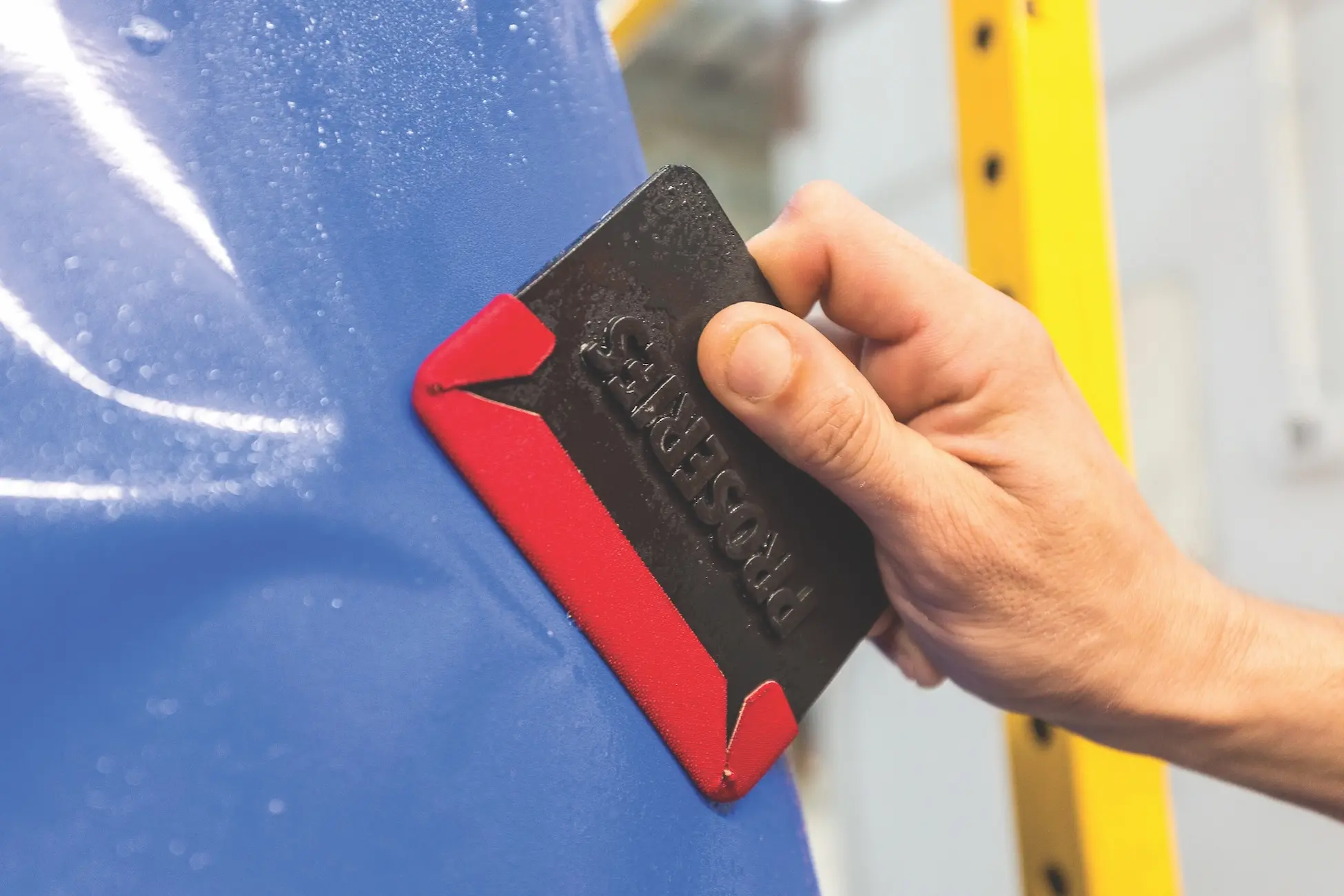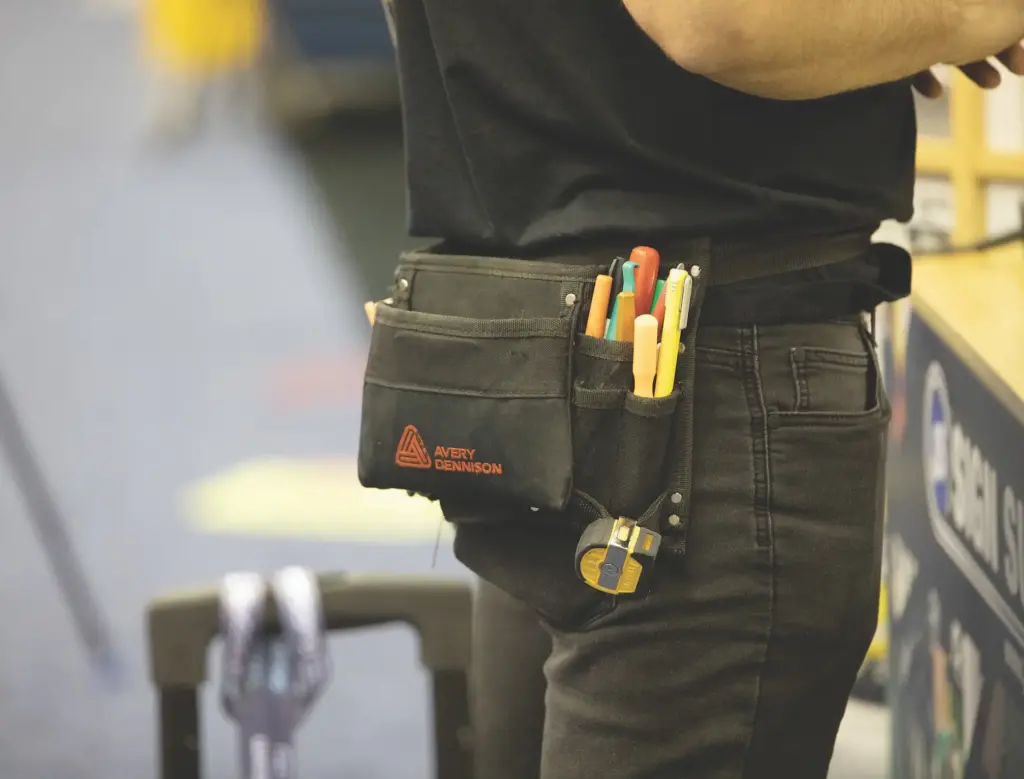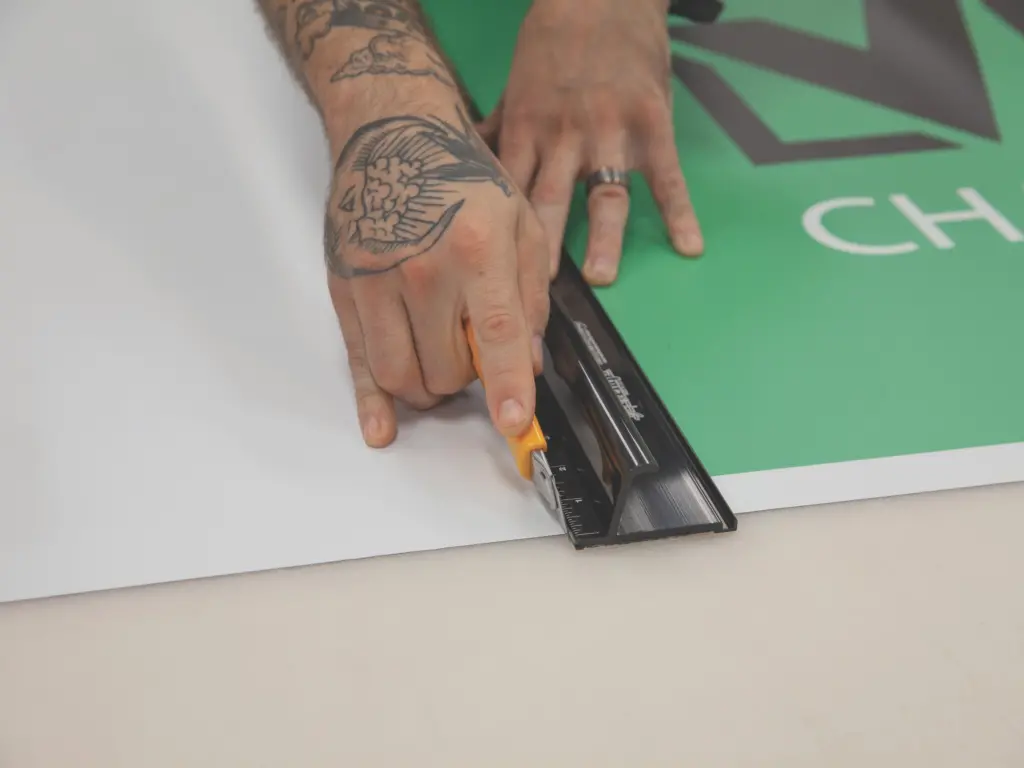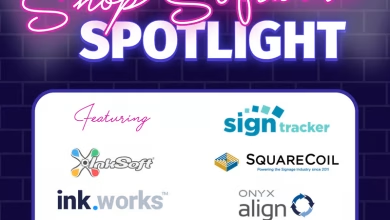Demand for printing, signage, apparel decoration, and awards and customization continues to grow, and so, too, does the need for the tools that fuel those industries. Whether you are getting into one of these industries for the first time or you have an established business and want to branch out into new products, here are some essential shop tools to get you started.
Signage and printing
Individuals planning to open up a new sign and print shop will want to start with the basics: a wide-format, roll-to-roll printer, and a plotter cutter, says Dave Haan, business development manager, sign supply division at JDS Industries in Sioux Falls, South Dakota.
“I would not get one machine that does printing and cutting,” he says. “You will want to keep your printer busy printing and your plotter cutter busy cutting.”
Haan also recommends getting a laminator since there are so many print applications that require lamination.
Amy Dallman, marketing specialist with Epilog Laser in Golden, Colorado, says that a laser engraver is “one of the most versatile and probably most in-demand pieces of equipment for sign shops because of the amount of materials they work with, and they can do both larger cutting of dimensional letters and shapes and very intricate engraving detail, depending on what type of signage project you are working on.”
The only materials a laser engraver won’t work well on are PVC and metal. The laser can cut wood, acrylic, fabric, plastic, and card stock. “If you are just starting out, I recommend getting the highest wattage and biggest laser bed your budget allows for,” Dallman says.
Shops can use a UV printer or sublimation printer to print patterns on acrylic and then use the laser to cut them out. “There are so many things you can do,” Dallman adds.
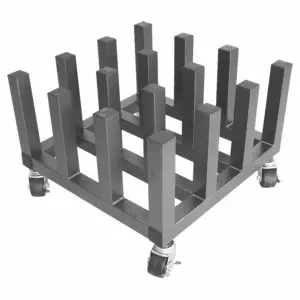 On the tools side, shops should consider investing in a heavy-duty media rack with wheels to hold rolled media and cords. That way it can be pushed to where it is needed and moved out of the way when it isn’t in use. “It will keep your space organized,” Haan says.
On the tools side, shops should consider investing in a heavy-duty media rack with wheels to hold rolled media and cords. That way it can be pushed to where it is needed and moved out of the way when it isn’t in use. “It will keep your space organized,” Haan says.
A tool belt is handy for any small tools an operator uses frequently, and a wheeled toolbox with drawers is a convenient way to organize smaller tools.
A heavy-duty table is a must. Haan recommends putting a self-healing cutting mat on top of it to protect the surface beneath. It is important to have a large worktable to lay out and mount printed graphics.
He also recommends investing in a safety ruler with a stainless-steel edge that is at least 52” long, with a non-slip grip to ensure it stays in place while you are trimming graphics. A 24” Rotatrim commercial paper cutter is a “smooth precision trimmer,” Haan says. It is portable and durable enough to run graphics through it, up to 3-mil in thickness. “This tool is handy and will decrease production time while maintaining quality,” he adds.
Most sign shops will need a variety of knives that cut at different angles. Haan recommends that the knives have a snap blade so that every time a cut is made, the blade is sharp and cuts cleanly.
A Coro-Claw is important for shops that work with corrugated plastic. The device is a hand-held flute cutter for 10-mil corrugated PVC, such as Coroplast. A Snitty vinyl cutter is a mini-slitting tool that is helpful for cutting self-adhesive material.
A variety of weeding tools will allow shops to easily remove design cavities from heat transfers and printable heat transfer materials.
If the shop applies wall or vehicle wraps, a heat gun and squeegee are imperative. For vehicle wraps, a set of heavy-duty magnets will help keep the material in place during installation.
Depending on a shop’s space, budget, and the types of markets it wants to serve, sandblasting or marking equipment could come in handy for personalization. CNC machines allow shops to cut out and carve wood pieces, acrylic, plexiglass, sign foam, and aluminum for channel letters.
Apparel decorating
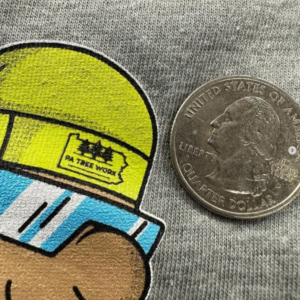 Advances in apparel decorating technology have fueled a boom in customized products, from T-shirts and leggings to ballcaps and shoes. Not every business has to invest in a wide-format dye-sublimation printer, though. Some businesses stick to screen printing, which is a tried-and-true form of apparel decoration that is still in high demand, especially for bulk orders. Direct-to-film (DTF) and direct-to-garment (DTG) printers are also gaining in popularity as technology advances and the equipment becomes more affordable.
Advances in apparel decorating technology have fueled a boom in customized products, from T-shirts and leggings to ballcaps and shoes. Not every business has to invest in a wide-format dye-sublimation printer, though. Some businesses stick to screen printing, which is a tried-and-true form of apparel decoration that is still in high demand, especially for bulk orders. Direct-to-film (DTF) and direct-to-garment (DTG) printers are also gaining in popularity as technology advances and the equipment becomes more affordable.
Screen printing
Screen printing is one of the cheapest ways to get into apparel decoration, although it does have a learning curve.
Jay Doub, sales and technical service for XpresScreen in Winston-Salem, North Carolina, says that anyone wanting to get into screen printing for the first time needs to understand art and art programs, such as Adobe Illustrator or CorelDRAW, as well as screen printing.
Doub says that before deciding to open a screen-printing business, individuals need to analyze the marketplace. “They need to know the market they will serve, first of all. That will dictate what equipment they are going to buy.”
If a shop wants to offer products through online high-school stores, they will want to invest in a small 4/4 press for screen printing, a single-head embroidery machine, a dryer, and a flash curer. If a shop owns screen-printing equipment, they can also print their own transfers.
“Printing transfers is your rainy-day thing,” Doub says. “When you are extremely slow, and you know you are going to have a specific sports season coming up, you can get ahead of the game by printing your own transfers. The goal is to make yourself continuously busy. If you’re not producing, not printing, not embroidering, you need to be selling.”
A shop can start with a one-color, one-station silk screen printing press to print on T-shirts or other flat items and add equipment as their business grows. Along with the printing press, a shop needs to invest in a conveyor dryer, flash unit, exposure unit, and washout booth or sink, says Taylor Landesman, vice president at Lawson Screen & Digital in St. Louis, Missouri.
For supplies, a shop will need plastisol ink, emulsion, squeegees, and scoop coaters.
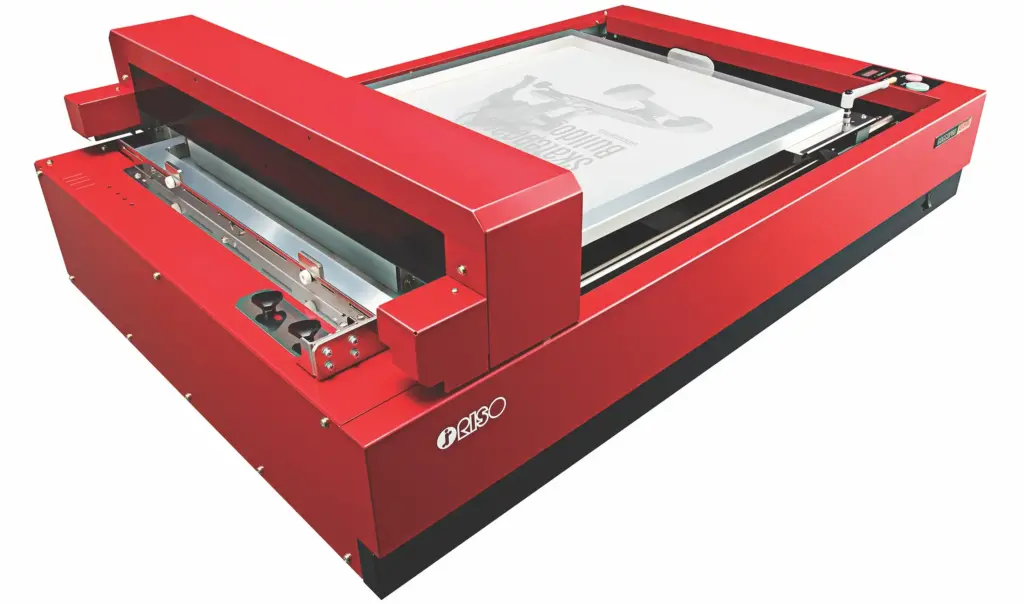
If a shop is scared to attempt screen printing because they are afraid of emulsion and the mess that comes with it, they should look at buying a digital thermal screen-making system, Doub says. These types of systems can make a screen in about four minutes, and they don’t take up too much space.
“It is a little more expensive to do our route initially, but return on investment is very good, you are up and running faster, producing quicker, and the results are really nice compared to conventional screen printing,” Doub adds.
He also says that screen-printing shops will need to invest in good, sharp squeegees, ink spatulas, test pellons, tape, and inks. “You can do some serious damage with that short list.” Test pellons are cotton-milled sheets of fabric that are used to test out a print before it goes to production.
Direct-to-film
Shops wanting to use direct-to-film to decorate apparel will just need an inkjet printer and a heat press. The beauty of DTF is that shops can print extra transfers for future use as part of the original print run. This works great for team jerseys. When new players are added to the team every year and they need one-off uniforms printed quickly, they can come back to the shop that originally printed their uniforms and easily order additional jerseys.
Direct-to-garment
Direct-to-garment printing requires an inkjet printer and a conveyor dryer for curing prints. Many types of fabrics will need to be pre-treated before they will accept a print. That can be done by hand, or shops can buy pre-treatment equipment or purchase apparel that has already been pre-treated.
Embroidery
Adding an embroidery machine to a shop that already handles other forms of apparel decoration is a no-brainer. Embroidery adds another level of personalization to garment orders and can open up additional revenue streams.
Awards and customization
Sign shops wanting to break out of traditional signage can use their existing tools to expand into new products. The awards and customization market is an easy one to get into if someone already knows how to use printers, cutters, and laser engravers. The laser engravers traditionally used in commercial print shops can also be used to customize promotional items such as mugs or keychains.
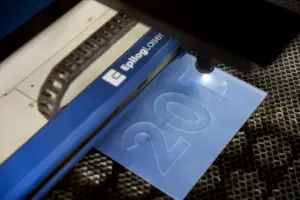 Like printers, laser engravers come in many different sizes. A larger machine could produce a trophy plate or plaque of recognition and then turn around and produce a larger signage project, Dallman says.
Like printers, laser engravers come in many different sizes. A larger machine could produce a trophy plate or plaque of recognition and then turn around and produce a larger signage project, Dallman says.
“You are only limited by the size of the laser bed. If you stick primarily to awards and recognition pieces, small production runs like keychains, or name badges, that can be problematic if you need to make something on a larger scale,” she adds.
A 48” X 36” engraver can allow shops to produce both smaller and larger items.
The most popular accessory for a laser engraver is a rotary attachment. That one tool allows a sign shop to expand into promotional items such as glassware, wine bottles, YETI mugs, and coffee cups — essentially anything that is not flat.
Additional lens sizes can allow shops to engrave the insides of bowls or other recessed areas. “It allows you to have more detail on a curve than a standard 1” lens would produce,” Dallman says.
Another cool tool for the awards and customization industry is a camera recognition system, which allows the operator to see a real-time image of the engraving table so they can pull in artwork and move it around to exactly where they want to engrave.

